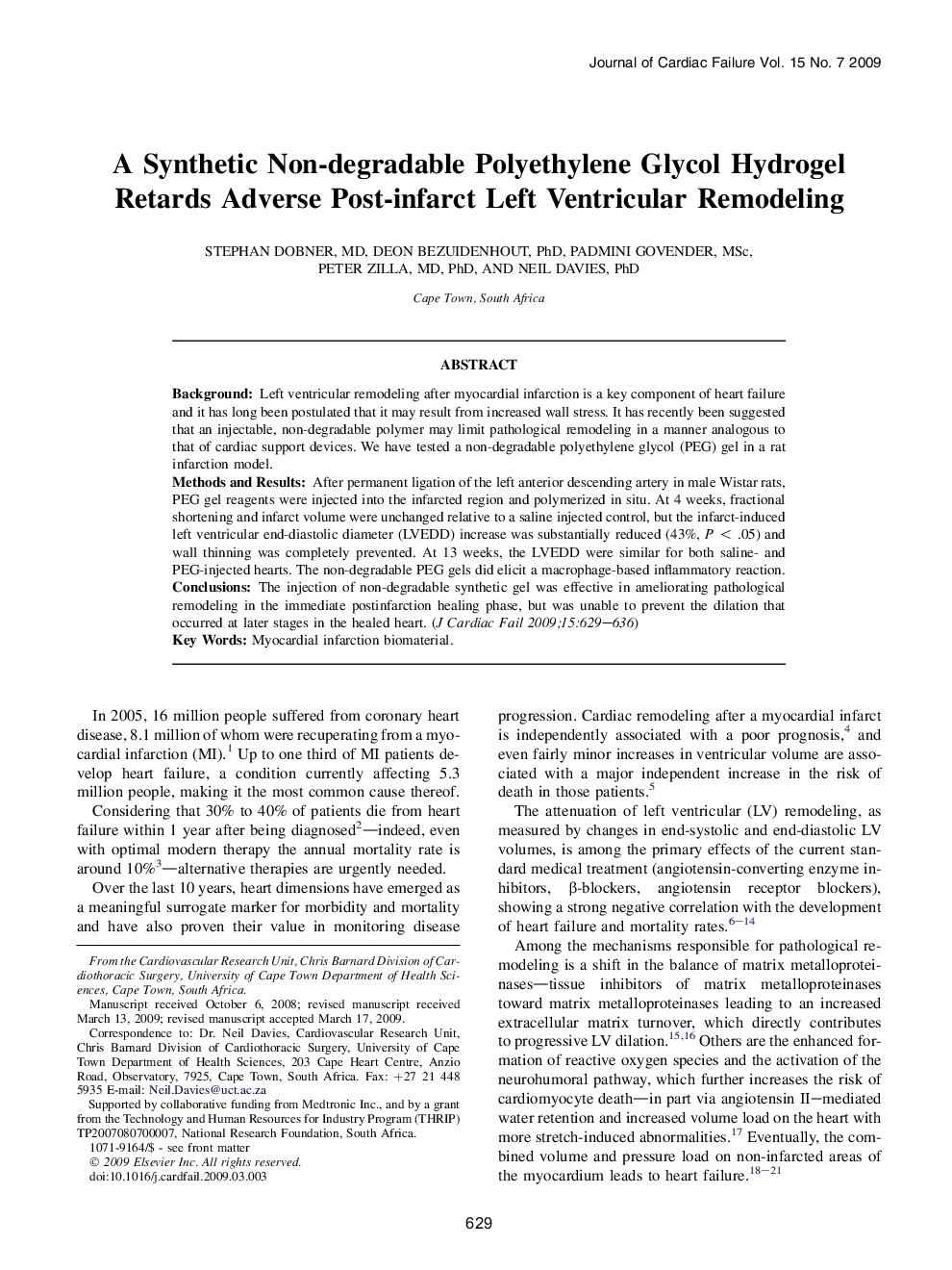| Article ID | Journal | Published Year | Pages | File Type |
|---|---|---|---|---|
| 2961851 | Journal of Cardiac Failure | 2009 | 8 Pages |
BackgroundLeft ventricular remodeling after myocardial infarction is a key component of heart failure and it has long been postulated that it may result from increased wall stress. It has recently been suggested that an injectable, non-degradable polymer may limit pathological remodeling in a manner analogous to that of cardiac support devices. We have tested a non-degradable polyethylene glycol (PEG) gel in a rat infarction model.Methods and ResultsAfter permanent ligation of the left anterior descending artery in male Wistar rats, PEG gel reagents were injected into the infarcted region and polymerized in situ. At 4 weeks, fractional shortening and infarct volume were unchanged relative to a saline injected control, but the infarct-induced left ventricular end-diastolic diameter (LVEDD) increase was substantially reduced (43%, P < .05) and wall thinning was completely prevented. At 13 weeks, the LVEDD were similar for both saline- and PEG-injected hearts. The non-degradable PEG gels did elicit a macrophage-based inflammatory reaction.ConclusionsThe injection of non-degradable synthetic gel was effective in ameliorating pathological remodeling in the immediate postinfarction healing phase, but was unable to prevent the dilation that occurred at later stages in the healed heart.
